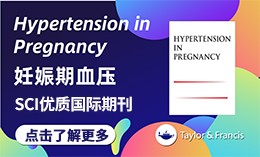-
VPS13C regulates phospho-Rab10-mediated lysosomal function in human dopaminergic neurons J. Cell Biol. (IF 7.4) Pub Date : 2024-02-15 Leonie F. Schrӧder, Wesley Peng, Ge Gao, Yvette C. Wong, Michael Schwake, Dimitri Krainc
Loss-of-function mutations in VPS13C are linked to early-onset Parkinson’s disease (PD). While VPS13C has been previously studied in non-neuronal cells, the neuronal role of VPS13C in disease-relevant human dopaminergic neurons has not been elucidated. Using live-cell microscopy, we investigated the role of VPS13C in regulating lysosomal dynamics and function in human iPSC-derived dopaminergic neurons
-
Alternative mechanisms of Notch activation by partitioning into distinct endosomal domains J. Cell Biol. (IF 7.4) Pub Date : 2024-02-15 Hideyuki Shimizu, Samira Hosseini-Alghaderi, Simon A. Woodcock, Martin Baron
Different membrane microdomain compositions provide unique environments that can regulate signaling receptor function. We identify microdomains on the endosome membrane of Drosophila endosomes, enriched in lipid-raft or clathrin/ESCRT-0, which are associated with Notch activation by distinct, ligand-independent mechanisms. Transfer of Notch between microdomains is regulated by Deltex and Suppressor
-
A MAP1B–cortactin–Tks5 axis regulates TNBC invasion and tumorigenesis J. Cell Biol. (IF 7.4) Pub Date : 2024-02-14 Hiroki Inoue, Taku Kanda, Gakuto Hayashi, Ryota Munenaga, Masayuki Yoshida, Kana Hasegawa, Takuya Miyagawa, Yukiya Kurumada, Jumpei Hasegawa, Tomoyuki Wada, Motoi Horiuchi, Yasuhiro Yoshimatsu, Fumiko Itoh, Yuki Maemoto, Kohei Arasaki, Yuichi Wakana, Tetsuro Watabe, Hiromichi Matsushita, Hironori Harada, Mitsuo Tagaya
The microtubule-associated protein MAP1B has been implicated in axonal growth and brain development. We found that MAP1B is highly expressed in the most aggressive and deadliest breast cancer subtype, triple-negative breast cancer (TNBC), but not in other subtypes. Expression of MAP1B was found to be highly correlated with poor prognosis. Depletion of MAP1B in TNBC cells impairs cell migration and
-
Local monomer levels and established filaments potentiate non-muscle myosin 2 assembly J. Cell Biol. (IF 7.4) Pub Date : 2024-02-14 Melissa A. Quintanilla, Hiral Patel, Huini Wu, Kem A. Sochacki, Shreya Chandrasekar, Matthew Akamatsu, Jeremy D. Rotty, Farida Korobova, James E. Bear, Justin W. Taraska, Patrick W. Oakes, Jordan R. Beach
The ability to dynamically assemble contractile networks is required throughout cell physiology, yet direct biophysical mechanisms regulating non-muscle myosin 2 filament assembly in living cells are lacking. Here, we use a suite of dynamic, quantitative imaging approaches to identify deterministic factors that drive myosin filament appearance and amplification. We find that actin dynamics regulate
-
Periodic changes of cyclin D1 mRNA stability are regulated by PC4 modifications in the cell cycle J. Cell Biol. (IF 7.4) Pub Date : 2024-02-13 Qimei Pan, Peng Luo, Kaishun Hu, Yuntan Qiu, Gaoyu Liu, Shijie Dai, Bokang Cui, Dong Yin, Chunmeng Shi
The cell cycle is a highly regulated process in which proteins involved in cell cycle progression exhibit periodic expression patterns, controlled by specific mechanisms such as transcription, translation, and degradation. However, the precise mechanisms underlying the oscillations of mRNA levels in cell cycle regulators are not fully understood. In this study, we observed that the stability of cyclin
-
Regulation of proteostasis and innate immunity via mitochondria-nuclear communication J. Cell Biol. (IF 7.4) Pub Date : 2024-02-09 Sookyung Kim, Theresa R. Ramalho, Cole M. Haynes
Mitochondria are perhaps best known as the “powerhouse of the cell” for their role in ATP production required for numerous cellular activities. Mitochondria have emerged as an important signaling organelle. Here, we first focus on signaling pathways mediated by mitochondria-nuclear communication that promote protein homeostasis (proteostasis). We examine the mitochondrial unfolded protein response
-
RAS G-domains allosterically contribute to the recognition of lipid headgroups and acyl chains J. Cell Biol. (IF 7.4) Pub Date : 2024-02-09 Neha Arora, Huanwen Mu, Hong Liang, Wenting Zhao, Yong Zhou
Mutant RAS are major contributors to cancer and signal primarily from nanoclusters on the plasma membrane (PM). Their C-terminal membrane anchors are main features of membrane association. However, the same RAS isoform bound to different guanine nucleotides spatially segregate. Different RAS nanoclusters all enrich a phospholipid, phosphatidylserine (PS). These findings suggest more complex membrane
-
APOE traffics to astrocyte lipid droplets and modulates triglyceride saturation and droplet size J. Cell Biol. (IF 7.4) Pub Date : 2024-02-09 Ian A. Windham, Alex E. Powers, Joey V. Ragusa, E. Diane Wallace, Maria Clara Zanellati, Victoria H. Williams, Colby H. Wagner, Kristen K. White, Sarah Cohen
The E4 variant of APOE strongly predisposes individuals to late-onset Alzheimer’s disease. We demonstrate that in response to lipogenesis, apolipoprotein E (APOE) in astrocytes can avoid translocation into the endoplasmic reticulum (ER) lumen and traffic to lipid droplets (LDs) via membrane bridges at ER–LD contacts. APOE knockdown promotes fewer, larger LDs after a fatty acid pulse, which contain
-
Microtubule-binding domains in Katanin p80 subunit are essential for severing activity in C. elegans J. Cell Biol. (IF 7.4) Pub Date : 2024-02-08 Eva Beaumale, Lucie Van Hove, Lionel Pintard, Nicolas Joly
Microtubule-severing enzymes (MSEs), such as Katanin, Spastin, and Fidgetin play essential roles in cell division and neurogenesis. They damage the microtubule (MT) lattice, which can either destroy or amplify the MT cytoskeleton, depending on the cellular context. However, little is known about how they interact with their substrates. We have identified the microtubule-binding domains (MTBD) required
-
IFNγ: Priming for death J. Cell Biol. (IF 7.4) Pub Date : 2024-02-08 James E. Vince
TNF signaling does not result in cell death unless multiple inhibitory signals are overcome, which can be accomplished by simultaneous signaling through IFNγ. In this issue, Deng and colleagues (http://doi.org/10.1083/jcb.202305026) dissect the mechanisms by which IFNγ signaling combines with TNF to mediate cell death through caspase-8, discussed by James E. Vince.
-
Light-sensitive phosphorylation regulates retinal IMPDH1 activity and filament assembly J. Cell Biol. (IF 7.4) Pub Date : 2024-02-07 S. John Calise, Audrey G. O’Neill, Anika L. Burrell, Miles S. Dickinson, Josephine Molfino, Charlie Clarke, Joel Quispe, David Sokolov, Rubén M. Buey, Justin M. Kollman
Inosine monophosphate dehydrogenase (IMPDH) is the rate-limiting enzyme in guanosine triphosphate (GTP) synthesis and assembles into filaments in cells, which desensitizes the enzyme to feedback inhibition and boosts nucleotide production. The vertebrate retina expresses two splice variants IMPDH1(546) and IMPDH1(595). In bovine retinas, residue S477 is preferentially phosphorylated in the dark, but
-
Rab32 family proteins regulate autophagosomal components recycling J. Cell Biol. (IF 7.4) Pub Date : 2024-02-07 Zhe Wu, Huilin Que, Chuangpeng Li, Li Yan, Shixuan Wang, Yueguang Rong
In autophagy, autophagosomes deliver the lumenal contents to lysosomes for degradation via autophagosome–lysosome fusion. In contrast, autophagosome outer membrane components were recycled via autophagosomal components recycling (ACR), which is mediated by the recycler complex. The recycler complex, composed of SNX4, SNX5, and SNX17, cooperate with the dynein–dynactin complex to mediate ACR. However
-
A role for Vps13-mediated lipid transfer at the ER–endosome contact site in ESCRT-mediated sorting J. Cell Biol. (IF 7.4) Pub Date : 2024-02-06 Sho W. Suzuki, Matthew West, Yichen Zhang, Jenny S. Fan, Rachel T. Roberts, Greg Odorizzi, Scott D. Emr
Endosomes are specialized organelles that function in the secretory and endocytic protein sorting pathways. Endocytosed cell surface receptors and transporters destined for lysosomal degradation are sorted into intraluminal vesicles (ILVs) at endosomes by endosomal sorting complexes required for transport (ESCRT) proteins. The endosomes (multivesicular bodies, MVBs) then fuse with the lysosome. During
-
TNF and IFNγ-induced cell death requires IRF1 and ELAVL1 to promote CASP8 expression J. Cell Biol. (IF 7.4) Pub Date : 2024-02-06 Buhao Deng, Jingyi Wang, Tingyun Yang, Zhao Deng, Jiafan Yuan, Bohan Zhang, Zhen Zhou, Fang Chen, Lu Fang, Chengzhi Liang, Bo Yan, Youwei Ai
TNFα and IFNγ (TNF/IFNγ) synergistically induce caspase-8 activation and cancer cell death. However, the mechanism of IFNγ in promoting TNF-initiated caspase-8 activation in cancer cells is poorly understood. Here, we found that in addition to CASP8, CYLD is transcriptionally upregulated by IFNγ-induced transcription factor IRF1. IRF1-mediated CASP8 and CYLD upregulation additively mediates TNF/IFNγ-induced
-
DNA combing versus DNA spreading and the separation of sister chromatids J. Cell Biol. (IF 7.4) Pub Date : 2024-02-05 Alice Meroni, Sophie E. Wells, Carmen Fonseca, Arnab Ray Chaudhuri, Keith W. Caldecott, Alessandro Vindigni
DNA combing and DNA spreading are two central approaches for studying DNA replication fork dynamics genome-wide at single-molecule resolution by distributing labeled genomic DNA on coverslips or slides for immunodetection. Perturbations in DNA replication fork dynamics can differentially affect either leading or lagging strand synthesis, for example, in instances where replication is blocked by a lesion
-
Endolysosomal vesicles at the center of B cell activation J. Cell Biol. (IF 7.4) Pub Date : 2024-02-02 Saara Hämälistö, Felipe Del Valle Batalla, María Isabel Yuseff, Pieta K. Mattila
The endolysosomal system specializes in degrading cellular components and is crucial to maintaining homeostasis and adapting rapidly to metabolic and environmental cues. Cells of the immune system exploit this network to process antigens or promote cell death by secreting lysosome-related vesicles. In B lymphocytes, lysosomes are harnessed to facilitate the extraction of antigens and to promote their
-
Identification of small molecule inhibitors of G3BP-driven stress granule formation J. Cell Biol. (IF 7.4) Pub Date : 2024-01-29 Brian D. Freibaum, James Messing, Haruko Nakamura, Ugur Yurtsever, Jinjun Wu, Hong Joo Kim, Jeff Hixon, Rene Marc Lemieux, Jay Duffner, Walter Huynh, Kathy Wong, Michael White, Christina Lee, Rachel E. Meyers, Roy Parker, J. Paul Taylor
Stress granule formation is triggered by the release of mRNAs from polysomes and is promoted by the action of the RNA-binding proteins G3BP1/2. Stress granules have been implicated in several disease states, including cancer and neurodegeneration. Consequently, compounds that limit stress granule formation or promote their dissolution have potential as both experimental tools and novel therapeutics
-
CLPB disaggregase dysfunction impacts the functional integrity of the proteolytic SPY complex J. Cell Biol. (IF 7.4) Pub Date : 2024-01-25 Megan J. Baker, Kai Uwe Blau, Alexander J. Anderson, Catherine S. Palmer, Laura F. Fielden, Jordan J. Crameri, Dusanka Milenkovic, David R. Thorburn, Ann E. Frazier, Thomas Langer, Diana Stojanovski
CLPB is a mitochondrial intermembrane space AAA+ domain–containing disaggregase. CLPB mutations are associated with 3-methylglutaconic aciduria and neutropenia; however, the molecular mechanism underscoring disease and the contribution of CLPB substrates to disease pathology remains unknown. Interactions between CLPB and mitochondrial quality control (QC) factors, including PARL and OPA1, have been
-
Phosphatidylserine turns the gears of phospholipids in B cell lymphoma J. Cell Biol. (IF 7.4) Pub Date : 2024-01-25 Fubito Nakatsu, Asami Kawasaki
Phosphatidylserine levels and distribution are tightly controlled by dedicated enzymes at the ER and plasma membrane. Nakatsu and Kawasaki discuss new work by Aoki and colleagues (https://doi.org/10.1083/jcb.202212074), which reveals an acute reliance on phosphatidylserine synthesis in B cell lymphomas needed to prevent aberrant B cell receptor activation and ensuing apoptosis.
-
PIGB maintains nuclear lamina organization in skeletal muscle of Drosophila J. Cell Biol. (IF 7.4) Pub Date : 2024-01-23 Miki Yamamoto-Hino, Masaru Ariura, Masahito Tanaka, Yuka W. Iwasaki, Kohei Kawaguchi, Yuta Shimamoto, Satoshi Goto
The nuclear lamina (NL) plays various roles and participates in nuclear integrity, chromatin organization, and transcriptional regulation. Lamin proteins, the main components of the NL, form a homogeneous meshwork structure under the nuclear envelope. Lamins are essential, but it is unknown whether their homogeneous distribution is important for nuclear function. Here, we found that PIGB, an enzyme
-
STK19 is a DNA/RNA-binding protein critical for DNA damage repair and cell proliferation J. Cell Biol. (IF 7.4) Pub Date : 2024-01-22 Yuling Li, Yanqiu Gong, Yue Zhou, Yuzhou Xiao, Wenxin Huang, Qiao Zhou, Yingfeng Tu, Yinglan Zhao, Shuyu Zhang, Lunzhi Dai, Qingxiang Sun
STK19 was originally identified as a manganese-dependent serine/threonine-specific protein kinase, but its function has been highly debated. Here, the crystal structure of STK19 revealed that it does not contain a kinase domain, but three intimately packed winged helix (WH) domains. The third WH domain mediated homodimerization and double-stranded DNA binding, both being important for its nuclear localization
-
IκB kinase thwarts aggregation: Phosphorylating TDP-43 for degradation J. Cell Biol. (IF 7.4) Pub Date : 2024-01-22 Cha Yang, Yanru Liu, Fenghua Hu
TDP-43 aggregation is a hallmark of neurodegeneration. In this issue, Iguchi et al. (https://doi.org/10.1083/jcb.202302048) report that IκB kinase (IKK), an important mediator of inflammation, phosphorylates cytoplasmic TDP-43 to promote proteasomal degradation, revealing an unexpected link between inflammation and TDP-43 homeostasis.
-
Sub-membrane actin rings compartmentalize the plasma membrane J. Cell Biol. (IF 7.4) Pub Date : 2024-01-22 Jakob Rentsch, Selle Bandstra, Batuhan Sezen, Philipp Sigrist, Francesca Bottanelli, Bettina Schmerl, Sarah Shoichet, Frank Noé, Mohsen Sadeghi, Helge Ewers
The compartmentalization of the plasma membrane (PM) is a fundamental feature of cells. The diffusivity of membrane proteins is significantly lower in biological than in artificial membranes. This is likely due to actin filaments, but assays to prove a direct dependence remain elusive. We recently showed that periodic actin rings in the neuronal axon initial segment (AIS) confine membrane protein motion
-
Mechanism of exportin retention in the cell nucleus J. Cell Biol. (IF 7.4) Pub Date : 2024-01-19 Larisa E. Kapinos, Joanna Kalita, Elena Kassianidou, Chantal Rencurel, Roderick Y. H. Lim
Exportin receptors are concentrated in the nucleus to transport essential cargoes out of it. A mislocalization of exportins to the cytoplasm is linked to disease. Hence, it is important to understand how their containment within the nucleus is regulated. Here, we have studied the nuclear efflux of exportin2 (cellular apoptosis susceptibility protein or CAS) that delivers karyopherinα (Kapα or importinα)
-
Single-molecule imaging of stochastic interactions that drive dynein activation and cargo movement in cells J. Cell Biol. (IF 7.4) Pub Date : 2024-01-19 Nireekshit Addanki Tirumala, Gregory Michael Ian Redpath, Sarah Viktoria Skerhut, Pritha Dolai, Natasha Kapoor-Kaushik, Nicholas Ariotti, K. Vijay Kumar, Vaishnavi Ananthanarayanan
Cytoplasmic dynein 1 (dynein) is the primary minus end–directed motor protein in most eukaryotic cells. Dynein remains in an inactive conformation until the formation of a tripartite complex comprising dynein, its regulator dynactin, and a cargo adaptor. How this process of dynein activation occurs is unclear since it entails the formation of a three-protein complex inside the crowded environs of a
-
Fast-evolving cofactors regulate the role of HEATR5 complexes in intra-Golgi trafficking J. Cell Biol. (IF 7.4) Pub Date : 2024-01-19 Lucas J. Marmorale, Huan Jin, Thomas G. Reidy, Brandon Palomino-Alonso, Christopher J. Zysnarski, Fatima Jordan-Javed, Sagar Lahiri, Mara C. Duncan
The highly conserved HEATR5 proteins are best known for their roles in membrane traffic mediated by the adaptor protein complex-1 (AP1). HEATR5 proteins rely on fast-evolving cofactors to bind to AP1. However, how HEATR5 proteins interact with these cofactors is unknown. Here, we report that the budding yeast HEATR5 protein, Laa1, functions in two biochemically distinct complexes. These complexes are
-
Mechanosensitive super-enhancers regulate genes linked to atherosclerosis in endothelial cells J. Cell Biol. (IF 7.4) Pub Date : 2024-01-17 Jin Li, Jiayu Zhu, Olivia Gray, Débora R. Sobreira, David Wu, Ru-Ting Huang, Bernadette Miao, Noboru J. Sakabe, Matthew D. Krause, Minna U. Kaikkonen, Casey E. Romanoski, Marcelo A. Nobrega, Yun Fang
Vascular homeostasis and pathophysiology are tightly regulated by mechanical forces generated by hemodynamics. Vascular disorders such as atherosclerotic diseases largely occur at curvatures and bifurcations where disturbed blood flow activates endothelial cells while unidirectional flow at the straight part of vessels promotes endothelial health. Integrated analysis of the endothelial transcriptome
-
The V-ATPase–ATG16L1 axis recruits LRRK2 to facilitate the lysosomal stress response J. Cell Biol. (IF 7.4) Pub Date : 2024-01-16 Tomoya Eguchi, Maria Sakurai, Yingxue Wang, Chieko Saito, Gen Yoshii, Thomas Wileman, Noboru Mizushima, Tomoki Kuwahara, Takeshi Iwatsubo
Leucine-rich repeat kinase 2 (LRRK2), a Rab kinase associated with Parkinson’s disease and several inflammatory diseases, has been shown to localize to stressed lysosomes and get activated to regulate lysosomal homeostasis. However, the mechanisms of LRRK2 recruitment and activation have not been well understood. Here, we found that the ATG8 conjugation system regulates the recruitment of LRRK2 as
-
A RAB transition orchestrates membrane trafficking in unconventional protein secretion J. Cell Biol. (IF 7.4) Pub Date : 2024-01-05 Yuxin Sun, Min Zhang, Liang Ge
Rab GTPases function as intracellular molecular switches that regulate vesicular transport. In the current issue, Li et al. (https://doi.org/10.1083/jcb.202306107) revealed RAB-8 to RAB-11 transition governing the unconventional secretion of membrane proteins in the intestinal epithelium of C. elegans.
-
-
hGRAD: A versatile “one-fits-all” system to acutely deplete RNA binding proteins from condensates J. Cell Biol. (IF 7.4) Pub Date : 2023-12-18 Benjamin Arnold, Ricarda J. Riegger, Ellen Kazumi Okuda, Irena Slišković, Mario Keller, Cem Bakisoglu, François McNicoll, Kathi Zarnack, Michaela Müller-McNicoll
Nuclear RNA binding proteins (RBPs) are difficult to study because they often belong to large protein families and form extensive networks of auto- and crossregulation. They are highly abundant and many localize to condensates with a slow turnover, requiring long depletion times or knockouts that cannot distinguish between direct and indirect or compensatory effects. Here, we developed a system that
-
Fission-independent compartmentalization of mitochondria during budding yeast cell division J. Cell Biol. (IF 7.4) Pub Date : 2023-12-15 Saori R. Yoshii, Yves Barral
Lateral diffusion barriers compartmentalize membranes to generate polarity or asymmetrically partition membrane-associated macromolecules. Budding yeasts assemble such barriers in the endoplasmic reticulum (ER) and the outer nuclear envelope at the bud neck to retain aging factors in the mother cell and generate naïve and rejuvenated daughter cells. However, little is known about whether other organelles
-
Correction: PLK4 self-phosphorylation drives the selection of a single site for procentriole assembly J. Cell Biol. (IF 7.4) Pub Date : 2023-12-14 Phillip Scott, Ana Curinha, Colin Gliech, Andrew J. Holland
-
XAF1 promotes colorectal cancer metastasis via VCP–RNF114–JUP axis J. Cell Biol. (IF 7.4) Pub Date : 2023-12-14 Ji Xia, Ning Ma, Qian Shi, Qin-Cheng Liu, Wei Zhang, Hui-Jun Cao, Yi-Kang Wang, Qian-Wen Zheng, Qian-Zhi Ni, Sheng Xu, Bing Zhu, Xiao-Song Qiu, Kai Ding, Jing-Yi Huang, Xin Liang, Yu Chen, Yan-Jun Xiang, Xi-Ran Zhang, Lin Qiu, Wei Chen, Dong Xie, Xiang Wang, Lingyun Long, Jing-Jing Li
Metastasis is the main cause of colorectal cancer (CRC)-related death, and the 5-year relative survival rate for CRC patients with distant metastasis is only 14%. X-linked inhibitor of apoptosis (XIAP)-associated factor 1 (XAF1) is a zinc-rich protein belonging to the interferon (IFN)-induced gene family. Here, we report a metastasis-promoting role of XAF1 in CRC by acting as a novel adaptor of valosin-containing
-
Cell polarity changes in cancer initiation and progression J. Cell Biol. (IF 7.4) Pub Date : 2023-12-13 Florent Peglion, Sandrine Etienne-Manneville
Cell polarity, which consists of the morphological, structural, and functional organization of cells along a defined axis, is a feature of healthy cells and tissues. In contrast, abnormal polarity is a hallmark of cancer cells. At the molecular level, key evolutionarily conserved proteins that control polarity establishment and maintenance in various contexts are frequently altered in cancer, but the
-
Sugar-free synapses run on mitochondrial Sirtuin 3 J. Cell Biol. (IF 7.4) Pub Date : 2023-12-13 Alexander P. Walsh, David J. Simon
Metabolic plasticity of neurons ensures their activity continues when glucose is limited. Walsh and Simon discuss new work by Ashrafi and colleagues (https://doi.org/10.1083/jcb.202305048) that finds Sirtuin 3 directs local metabolic adaptation at synapses during sustained glucose deprivation.
-
Capping protein regulators of actin assembly in budding yeast J. Cell Biol. (IF 7.4) Pub Date : 2023-12-12 John A. Cooper
Cellular functions of actin capping protein (CP) regulators are poorly understood. Di Pietro and colleagues (https://doi.org/10.1083/jcb.202306154) shed unprecedented light on this topic using budding yeast. Two proteins with CPI (capping protein interacting) motifs recruit CP to sites of actin assembly, while a third contributes to CP turnover.
-
Multimerization of a disordered kinetochore protein promotes accurate chromosome segregation by localizing a core dynein module J. Cell Biol. (IF 7.4) Pub Date : 2023-12-12 Jessica M. McGory, Vikash Verma, Dylan M. Barcelos, Thomas J. Maresca
Kinetochores connect chromosomes and spindle microtubules to maintain genomic integrity through cell division. Crosstalk between the minus-end directed motor dynein and kinetochore–microtubule attachment factors promotes accurate chromosome segregation by a poorly understood pathway. Here, we identify a linkage between the intrinsically disordered protein Spc105 (KNL1 orthologue) and dynein using an
-
BLK positively regulates TLR/IL-1R signaling by catalyzing TOLLIP phosphorylation J. Cell Biol. (IF 7.4) Pub Date : 2023-12-11 Wei-Wei Li, Xu-Xu Fan, Zhi-Sheng Xu, Zi-Xiang Zhu, Zhao-Yu Zhu, Xue-Jing Cao, Dan-Shi Pei, Yi-Zhuo Wang, Ji-Yan Zhang, Yan-Yi Wang, Hai-Xue Zheng
TLR/IL-1R signaling plays a critical role in sensing various harmful foreign pathogens and mounting efficient innate and adaptive immune responses, and it is tightly controlled by intracellular regulators at multiple levels. In particular, TOLLIP forms a constitutive complex with IRAK1 and sequesters it in the cytosol to maintain the kinase in an inactive conformation under unstimulated conditions
-
Long live lamins J. Cell Biol. (IF 7.4) Pub Date : 2023-12-11 Qi Jin, Howard J. Worman
Mutations in genes encoding nuclear lamins cause diseases called laminopathies. In this issue, Hasper et al. (https://doi.org/10.1083/jcb.202307049) show that lamin A/C and the prelamin A variant in Hutchinson-Gilford progeria syndrome have relatively long lifetimes in affected tissues.
-
USP8 prevents aberrant NF-κB and Nrf2 activation by counteracting ubiquitin signals from endosomes J. Cell Biol. (IF 7.4) Pub Date : 2023-12-09 Akinori Endo, Toshiaki Fukushima, Chikage Takahashi, Hikaru Tsuchiya, Fumiaki Ohtake, Sayaka Ono, Tony Ly, Yukiko Yoshida, Keiji Tanaka, Yasushi Saeki, Masayuki Komada
K63-linked ubiquitin chains attached to plasma membrane proteins serve as tags for endocytosis and endosome-to-lysosome sorting. USP8 is an essential deubiquitinase for the maintenance of endosomal functions. Prolonged depletion of USP8 leads to cell death, but the major effects on cellular signaling pathways are poorly understood. Here, we show that USP8 depletion causes aberrant accumulation of K63-linked
-
The Cby3/ciBAR1 complex positions the annulus along the sperm flagellum during spermiogenesis J. Cell Biol. (IF 7.4) Pub Date : 2023-12-09 Mohammed Hoque, Feng-Qian Li, William David Weber, Jun Jie Chen, Eunice N. Kim, Pao-Lin Kuo, Pablo E. Visconti, Ken-Ichi Takemaru
Proper compartmentalization of the sperm flagellum is essential for fertility. The annulus is a septin-based ring that demarcates the midpiece (MP) and the principal piece (PP). It is assembled at the flagellar base, migrates caudally, and halts upon arriving at the PP. However, the mechanisms governing annulus positioning remain unknown. We report that a Chibby3 (Cby3)/Cby1-interacting BAR domain-containing
-
Medioapical contractile pulses coordinated between cells regulate Drosophila eye morphogenesis J. Cell Biol. (IF 7.4) Pub Date : 2023-12-08 Christian Rosa-Birriel, Jacob Malin, Victor Hatini
Lattice cells (LCs) in the developing Drosophila retina change shape before attaining final form. Previously, we showed that repeated contraction and expansion of apical cell contacts affect these dynamics. Here, we describe another factor, the assembly of a Rho1-dependent medioapical actomyosin ring formed by nodes linked by filaments that contract the apical cell area. Cell area contraction alternates
-
NAK-associated protein 1/NAP1 activates TBK1 to ensure accurate mitosis and cytokinesis J. Cell Biol. (IF 7.4) Pub Date : 2023-12-07 Swagatika Paul, Shireen A. Sarraf, Ki Hong Nam, Leila Zavar, Nicole DeFoor, Sahitya Ranjan Biswas, Lauren E. Fritsch, Tomer M. Yaron, Jared L. Johnson, Emily M. Huntsman, Lewis C. Cantley, Alban Ordureau, Alicia M. Pickrell
Subcellular location and activation of Tank Binding Kinase 1 (TBK1) govern precise progression through mitosis. Either loss of activated TBK1 or its sequestration from the centrosomes causes errors in mitosis and growth defects. Yet, what regulates its recruitment and activation on the centrosomes is unknown. We identified that NAK-associated protein 1 (NAP1) is essential for mitosis, binding to and
-
Margarete Heck (1959–2023): Cell biologist, geneticist, and incandescent social spark J. Cell Biol. (IF 7.4) Pub Date : 2023-12-07 Neville Cobbe, Francesca Di Cara, Allan C. Spradling, Sharron Vass
Margarete M.S. Heck, professor of cell biology and genetics, University of Edinburgh, died peacefully at home amid her loving family under a blue moon on August 30, 2023, after a long journey with ovarian cancer.
-
An mTurq2-Col4a1 mouse model allows for live visualization of mammalian basement membrane development J. Cell Biol. (IF 7.4) Pub Date : 2023-12-05 Rebecca A. Jones, Brandon Trejo, Parijat Sil, Katherine A. Little, H. Amalia Pasolli, Bradley Joyce, Eszter Posfai, Danelle Devenport
Basement membranes (BMs) are specialized sheets of extracellular matrix that underlie epithelial and endothelial tissues. BMs regulate the traffic of cells and molecules between compartments, and participate in signaling, cell migration, and organogenesis. The dynamics of mammalian BMs, however, are poorly understood, largely due to a lack of models in which core BM components are endogenously labeled
-
Phosphatidylserine synthesis controls oncogenic B cell receptor signaling in B cell lymphoma J. Cell Biol. (IF 7.4) Pub Date : 2023-12-04 Jumpei Omi, Taiga Kato, Yohei Yoshihama, Koki Sawada, Nozomu Kono, Junken Aoki
Cancer cells harness lipid metabolism to promote their own survival. We screened 47 cancer cell lines for survival dependency on phosphatidylserine (PS) synthesis using a PS synthase 1 (PTDSS1) inhibitor and found that B cell lymphoma is highly dependent on PS. Inhibition of PTDSS1 in B cell lymphoma cells caused a reduction of PS and phosphatidylethanolamine levels and an increase of phosphoinositide
-
Formation and function of multiciliated cells J. Cell Biol. (IF 7.4) Pub Date : 2023-11-30 Qian Lyu, Qingchao Li, Jun Zhou, Huijie Zhao
In vertebrates, multiciliated cells (MCCs) are terminally differentiated cells that line the airway tracts, brain ventricles, and reproductive ducts. Each MCC contains dozens to hundreds of motile cilia that beat in a synchronized manner to drive fluid flow across epithelia, the dysfunction of which is associated with a group of human diseases referred to as motile ciliopathies, such as primary cilia
-
Nedd4-2-dependent regulation of astrocytic Kir4.1 and Connexin43 controls neuronal network activity J. Cell Biol. (IF 7.4) Pub Date : 2023-11-30 Bekir Altas, Hong-Jun Rhee, Anes Ju, Hugo Cruces Solís, Samir Karaca, Jan Winchenbach, Oykum Kaplan-Arabaci, Manuela Schwark, Mateusz C. Ambrozkiewicz, ChungKu Lee, Lena Spieth, Georg L. Wieser, Viduth K. Chaugule, Irina Majoul, Mohamed A. Hassan, Rashi Goel, Sonja M. Wojcik, Noriko Koganezawa, Kenji Hanamura, Daniela Rotin, Andrea Pichler, Miso Mitkovski, Livia de Hoz, Alexandros Poulopoulos, Henning
Nedd4-2 is an E3 ubiquitin ligase in which missense mutation is related to familial epilepsy, indicating its critical role in regulating neuronal network activity. However, Nedd4-2 substrates involved in neuronal network function have yet to be identified. Using mouse lines lacking Nedd4-1 and Nedd4-2, we identified astrocytic channel proteins inwardly rectifying K+ channel 4.1 (Kir4.1) and Connexin43
-
Coordination of RAB-8 and RAB-11 during unconventional protein secretion J. Cell Biol. (IF 7.4) Pub Date : 2023-11-29 Xinxin Li, Bowen Liu, Yue Wen, Jiabin Wang, Yusong R. Guo, Anbing Shi, Long Lin
Multiple physiology-pertinent transmembrane proteins reach the cell surface via the Golgi-bypassing unconventional protein secretion (UcPS) pathway. By employing C. elegans–polarized intestine epithelia, we recently have revealed that the small GTPase RAB-8/Rab8 serves as an important player in the process. Nonetheless, its function and the relevant UcPS itinerary remain poorly understood. Here, we
-
Integration of cell wall synthesis and chromosome segregation during cell division in Caulobacter J. Cell Biol. (IF 7.4) Pub Date : 2023-11-28 Christopher R. Mahone, Isaac P. Payne, Zhixin Lyu, Joshua W. McCausland, Jordan M. Barrows, Jie Xiao, Xinxing Yang, Erin D. Goley
To divide, bacteria must synthesize their peptidoglycan (PG) cell wall, a protective meshwork that maintains cell shape. FtsZ, a tubulin homolog, dynamically assembles into a midcell band, recruiting division proteins, including the PG synthases FtsW and FtsI. FtsWI are activated to synthesize PG and drive constriction at the appropriate time and place. However, their activation pathway remains unresolved
-
NuSAP regulates microtubule flux and Kif2A localization to ensure accurate chromosome congression J. Cell Biol. (IF 7.4) Pub Date : 2023-11-27 Mengjie Sun, Yao Wang, Guangwei Xin, Biying Yang, Qing Jiang, Chuanmao Zhang
Precise chromosome congression and segregation requires the proper assembly of a steady-state metaphase spindle, which is dynamic and maintained by continuous microtubule flux. NuSAP is a microtubule-stabilizing and -bundling protein that promotes chromosome-dependent spindle assembly. However, its function in spindle dynamics remains unclear. Here, we demonstrate that NuSAP regulates the metaphase
-
The dynamic recruitment of LAB proteins senses meiotic chromosome axis differentiation in C. elegans J. Cell Biol. (IF 7.4) Pub Date : 2023-11-27 Ruoxi Wang, Jiaxiang Li, Yuqi Tian, Yating Sun, Yu Zhang, Mengfei Liu, Ruirui Zhang, Li Zhao, Qian Li, Xiaoqian Meng, Jun Zhou, Jinmin Gao
During meiosis, cohesin and meiosis-specific proteins organize chromatin into an axis-loop architecture, coordinating homologous synapsis, recombination, and ordered chromosome segregation. However, how the meiotic chromosome axis is assembled and differentiated with meiotic progression remains elusive. Here, we explore the dynamic recruitment of two long arms of the bivalent proteins, LAB-1 and LAB-2
-
IκB kinase phosphorylates cytoplasmic TDP-43 and promotes its proteasome degradation J. Cell Biol. (IF 7.4) Pub Date : 2023-11-23 Yohei Iguchi, Yuhei Takahashi, Jiayi Li, Kunihiko Araki, Yoshinobu Amakusa, Yu Kawakami, Kenta Kobayashi, Satoshi Yokoi, Masahisa Katsuno
Cytoplasmic aggregation of TDP-43 in neurons is a pathological feature common to amyotrophic lateral sclerosis (ALS) and frontotemporal lobar degeneration (FTLD). We demonstrate that the IκB kinase (IKK) complex promotes the degradation of cytoplasmic TDP-43 through proteasomes. While IKKβ is a major factor in TDP-43 degradation, IKKα acts as a cofactor, and NEMO functions as a scaffold for the recruitment
-
Lipid exchange at ER–trans-Golgi contact sites governs polarized cargo sorting J. Cell Biol. (IF 7.4) Pub Date : 2023-11-22 Dávid Kovács, Anne-Sophie Gay, Delphine Debayle, Sophie Abélanet, Amanda Patel, Bruno Mesmin, Frédéric Luton, Bruno Antonny
Oxysterol binding protein (OSBP) extracts cholesterol from the ER to deliver it to the TGN via counter exchange and subsequent hydrolysis of the phosphoinositide PI(4)P. Here, we show that this pathway is essential in polarized epithelial cells where it contributes not only to the proper subcellular distribution of cholesterol but also to the trans-Golgi sorting and trafficking of numerous plasma membrane
-
Sirtuin3 ensures the metabolic plasticity of neurotransmission during glucose deprivation J. Cell Biol. (IF 7.4) Pub Date : 2023-11-21 Anupama Tiwari, Arsalan Hashemiaghdam, Marissa A. Laramie, Dario Maschi, Tristaan Haddad, Marion I. Stunault, Carmen Bergom, Ali Javaheri, Vitaly Klyachko, Ghazaleh Ashrafi
Neurotransmission is an energetically expensive process that underlies cognition. During intense electrical activity or dietary restrictions, the glucose level in the brain plummets, forcing neurons to utilize alternative fuels. However, the molecular mechanisms of neuronal metabolic plasticity remain poorly understood. Here, we demonstrate that glucose-deprived neurons activate the CREB and PGC1α
-
Splicing under stress: A matter of time and place J. Cell Biol. (IF 7.4) Pub Date : 2023-11-21 Paulina Podszywalow-Bartnicka, Karla M. Neugebauer
Excision of introns during splicing regulates gene expression. In this issue, work by Sung et al. (https://doi.org/10.1083/jcb.202111151) demonstrates that the timing of intron removal in response to stress is coordinated in nuclear speckles, adding a component of spatial regulation to co-/post-transcriptional splicing.
-
Bridging condensins mediate compaction of mitotic chromosomes J. Cell Biol. (IF 7.4) Pub Date : 2023-11-17 Giada Forte, Lora Boteva, Filippo Conforto, Nick Gilbert, Peter R. Cook, Davide Marenduzzo
Eukaryotic chromosomes compact during mitosis into elongated cylinders—and not the spherical globules expected of self-attracting long flexible polymers. This process is mainly driven by condensin-like proteins. Here, we present Brownian-dynamic simulations involving two types of such proteins with different activities. One, which we refer to as looping condensins, anchors long-lived chromatin loops
-
Mechanism of actin capping protein recruitment and turnover during clathrin-mediated endocytosis J. Cell Biol. (IF 7.4) Pub Date : 2023-11-15 Andrew K. Lamb, Andres N. Fernandez, Abdunaser Eadaim, Katelyn Johnson, Santiago M. Di Pietro
Clathrin-mediated endocytosis depends on polymerization of a branched actin network to provide force for membrane invagination. A key regulator in branched actin network formation is actin capping protein (CP), which binds to the barbed end of actin filaments to prevent the addition or loss of actin subunits. CP was thought to stochastically bind actin filaments, but recent evidence shows CP is regulated
-
Long lifetime and tissue-specific accumulation of lamin A/C in Hutchinson–Gilford progeria syndrome J. Cell Biol. (IF 7.4) Pub Date : 2023-11-15 John Hasper, Kevin Welle, Kyle Swovick, Jennifer Hryhorenko, Sina Ghaemmaghami, Abigail Buchwalter
LMNA mutations cause laminopathies that afflict the cardiovascular system and include Hutchinson-Gilford progeria syndrome. The origins of tissue specificity in these diseases are unclear as the lamin A/C proteins are broadly expressed. We show that LMNA transcript levels are not predictive of lamin A/C protein levels across tissues and use quantitative proteomics to discover that tissue context and












































 京公网安备 11010802027423号
京公网安备 11010802027423号